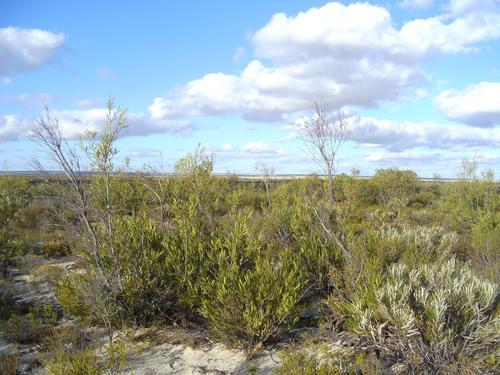Ecosystem resilience towards climate change – the role of interacting buffer mechanisms in Mediterranean-type ecosystems
Researchers
Hanna Weise, Britta Tietjen
Abstract
Ecosystems are known to exhibit buffer mechanisms that reduce the impact of disturbances on vegetation and that prevent the system from easily shifting from one state to another. The aim of this project is to first evaluate buffer mechanisms on different levels of an ecosystem in the species-rich Mediterranean-type shrublands of the Eneabba sandplain in south-western Australia and then to develop a general theory of buffer mechanisms in Mediterranean-type ecosystems. For this, we will develop an ecohydrological model, which simulates the spatially heterogeneous coupled dynamics of water and vegetation. Model experiments on trait variability, species composition and landscape heterogeneity will then help to asses the drivers of resilience under present conditions, to disentangle impacts of single buffer mechanisms, and to assess the role of different buffer mechanisms under climate change and the future resilience of the ecosystem.
funded by 


